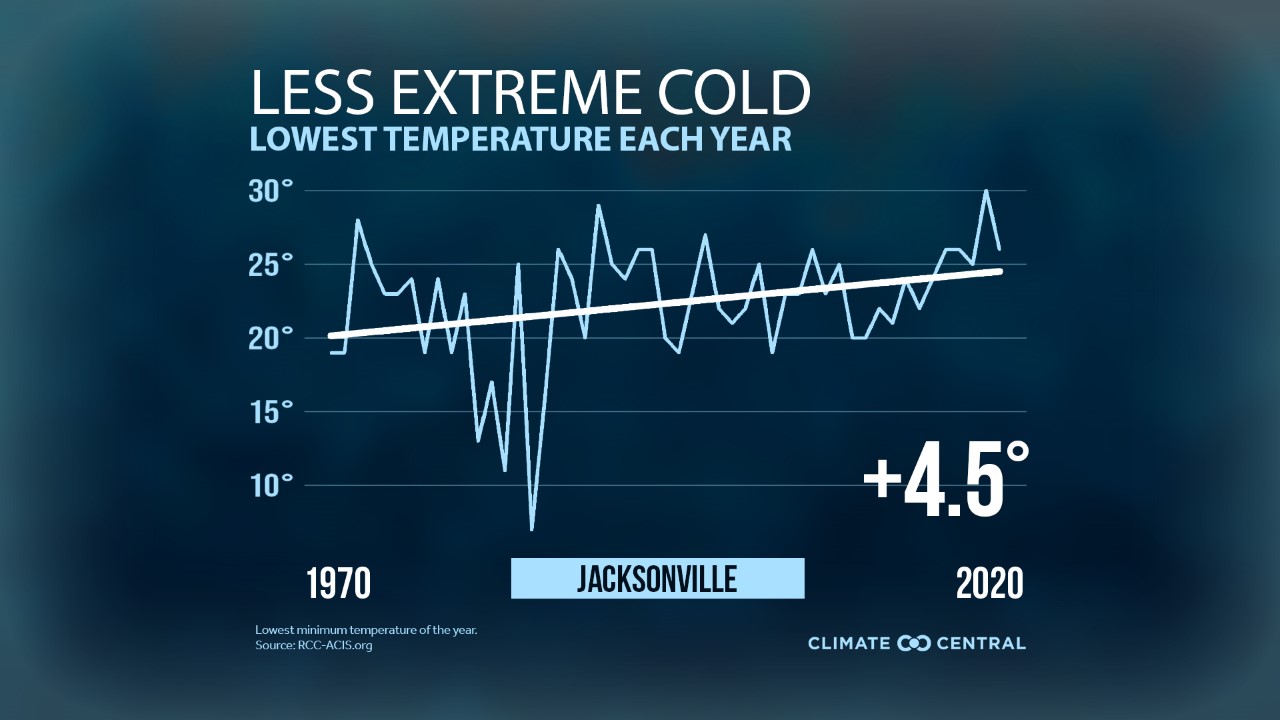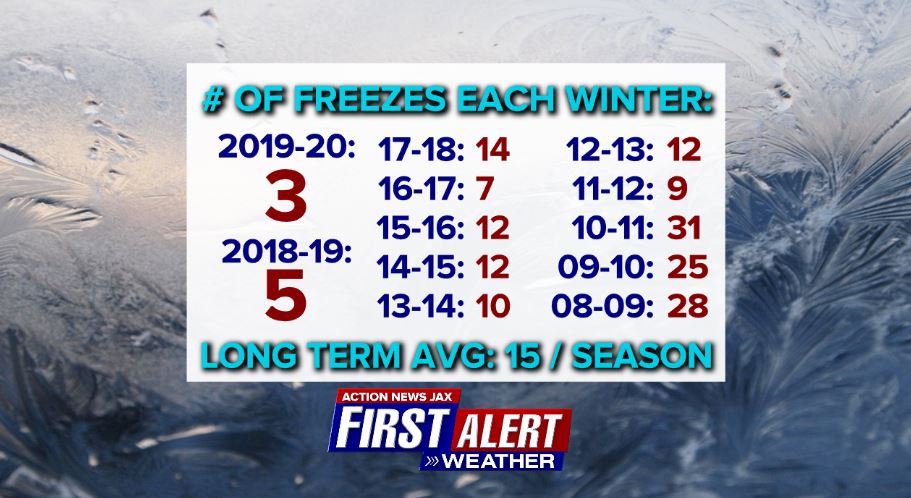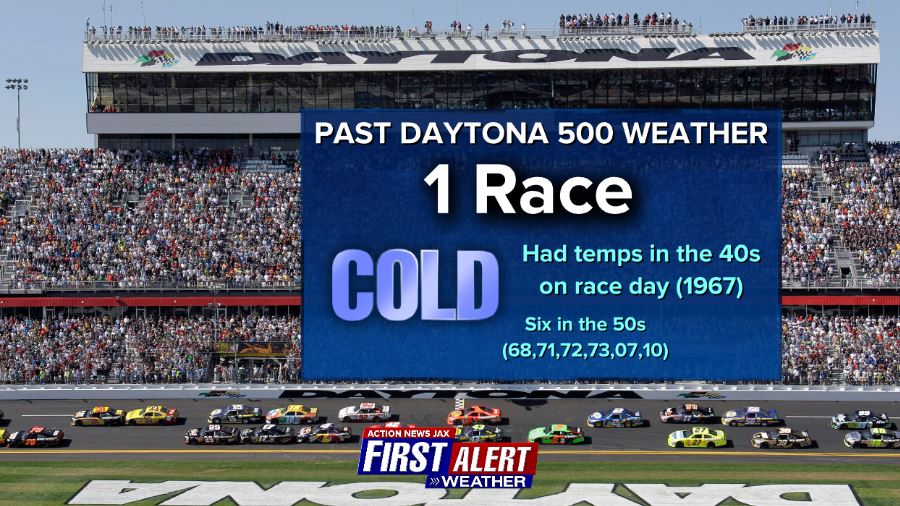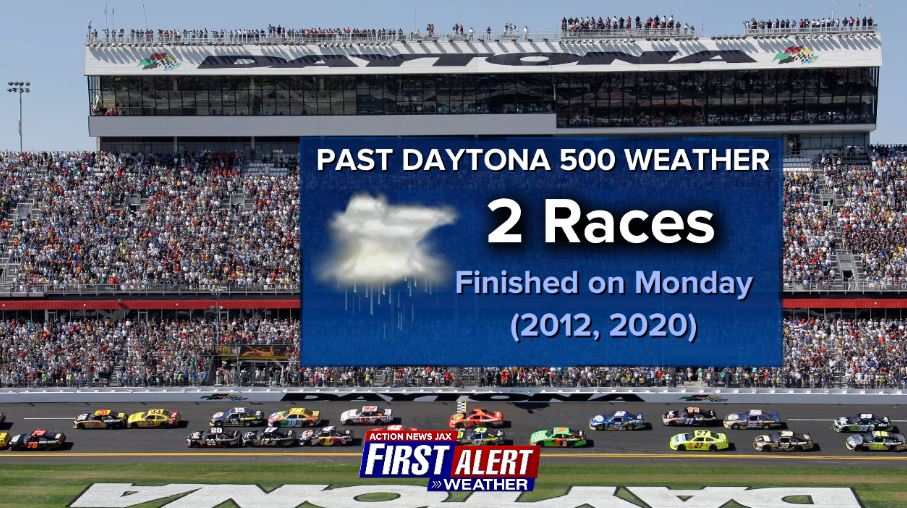Jacksonville, FL — Temperature analysis by “Climate Matters” shows the coldest nights of winter have generally been on the rise over the last 50 years or so across the U.S.:
Climate Central looked at the annual lowest temperatures at 244 locations across the U.S and found that 98% have recorded a rise of at least 1°F in their yearly coldest temperature since 1970.
The average trend across these cities is a 7°F rise, and 42 cities have recorded an increase of 10°F or more. And the warming trend is happening in cities across the country: Boise, Idaho (16°F), Albany, N.Y. (14°F), Minneapolis (12°F), Nashville, Tenn. (14°F), and Anchorage, Alaska (12°F).
Our local numbers would certainly back that up.... over about the last 10 years at least. We have not had at least the avg. number of freezes - 15 - since the very cold winter 2010-11. The avg. date of the last freeze of the season for most of Duval Co. is mid Feb., so we’ve almost “broken the back” of winter locally.
The Daytona 500 is scheduled for Valentine’s Day this year. The weather pattern looks “unsettled” to say the least. Past race day weather history:
Feb. - early March night skies - Sky & Telescope:
Feb. 18 (dusk): High in the southwest, the waxing crescent Moon and Mars hang about 3½° apart.
Feb. 19 (dusk): The first-quarter Moon is prettily placed between the Hyades and the Pleiades, with Mars to their right.
Feb. 23 (evening): The waxing gibbous Moon is 4° from Pollux in Gemini.
Feb. 24 (evening): The Moon, now in Cancer, is only a couple of degrees from the Beehive Cluster (M44).
Feb. 25 (dawn): Jupiter, Mercury, and Saturn form a wide triangle rising in the east-southeast before sunrise.
Feb. 26 (evening): The almost-full Moon rises in Leo, trailing Regulus by about 7°.
Mar. 2 (dawn): The waning gibbous Moon is less than 5° above Spica.
Mar. 2 (evening): Mars sits about 2° from the Pleiades cluster for the next three evenings.
Mar. 5 (dawn): Look low above the east-southeastern horizon before sunrise to spot Jupiter and Mercury just 1/3° apart. Saturn gleams to their upper right.
Mar. 5 (dawn): Turn south to see the last-quarter Moon about 5° from the red supergiant star Antares.
Moon Phases
Last Quarter – February 4, 12:37 p.m. EST
New Moon – February 11, 2:06 p.m. EST
First Quarter – February 19, 1:47 p.m. EST
Full Moon – February 27, 3:17 a.m. EST (Full Snow Moon)
Cox Media Group

:quality(70)/cloudfront-us-east-1.images.arcpublishing.com/cmg/4BY52YP3URHB3CBG6342FEUNGQ.jpg)






:quality(70)/cloudfront-us-east-1.images.arcpublishing.com/cmg/HJ3L3HBBJBH6PB5ZFB3SVGFXSU.png)
:quality(70)/cloudfront-us-east-1.images.arcpublishing.com/cmg/4TQDXERT5VGORNZ4NQWXNO5H64.png)
:quality(70)/cloudfront-us-east-1.images.arcpublishing.com/cmg/SKX4RKW645ERTATCLA4V2FVRKQ.png)
:quality(70)/cloudfront-us-east-1.images.arcpublishing.com/cmg/5PIZRG7NYBAHDDABTG5BNVGO6Y.jpg)
:quality(70)/cloudfront-us-east-1.images.arcpublishing.com/cmg/V7JDMMD6JJEEHIL6C7OSLV3ABU.png)
:quality(70)/cloudfront-us-east-1.images.arcpublishing.com/cmg/CJI66UGYG52MJYCSTXCAONTWTY.jpg)
:quality(70)/cloudfront-us-east-1.images.arcpublishing.com/cmg/EDYIW77XOBYL6CORGK4TI53UZQ.jpg)
:quality(70)/cloudfront-us-east-1.images.arcpublishing.com/cmg/JSVAPZ27S37AZ77GWYGTMBSFPQ.jpg)
